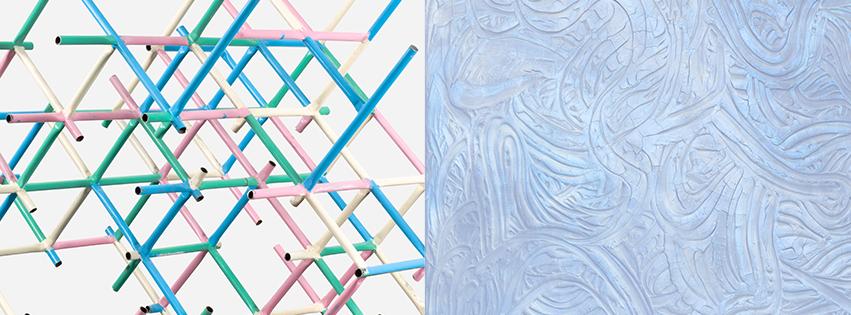Muscle Memory
Muscle Memory
Peres Projects is pleased to present a two-person exhibition with new works by Bolivian-American artist Donna Huanca and Polish-Canadian artist Przemek Pyszczek. Both artists create work that draws from their experiences of social and cultural displacement as first generation North Americans. New paintings and a performance by Huanca and sculptural forms by Pyszczek both relate to the human body as well as question social control and veracity of memory.
Since the 1980s, the power suit and bold use of brand-name cosmetics have armored the female executive on the male-dominated battlefield of corporate life. On the one hand, these outward facing garments and war paint empower; On the other hand they represent a male ideal of the female form. In Donna Huanca’s Cosmetic Paintings, the routine female practice of applying makeup and dressing for success is transformed into a powerful, primal action, employing these loaded, normative symbols of feminine power by applying Chanel makeup onto woolen suit material. In the context of an exhibition, Huanca’s flat works act as backdrops to be experienced in conversation with the body. They are activated through a performance of painted female bodies glacially engaging with the works and space. The juxtaposition of the almost static live performance versus the remnants of intense action on canvas challenges the viewer to ask where social power is stored: is it in the body or in the garments that conceal it?
The architecture of Eastern Europe during the post-war period not only functioned as a means to house as many people as possible after the destruction of WWII, it was also meant to embody the aspirations of communism which, in its ideal state, reduced the complexity of life into human scale units of shared wealth and community. At the center of this ideology was an architectural impetus that led to massive groups of housing blocks centered around parks filled with brightly colored and elaborately shaped metal jungle gym equipment. In the Playground Structure series, Przemek Pyszczek destroys, rebuilds and abstracts these forms as a way of reconciling childhood memory with the realities of immigrant displacement.
Huanca and Pyszczek’s practices intersect at their interest in the ramifications of cultural norms and social planning on the body. While Huanca employs signifiers of female power to confront social constructs around gender, Pyszczek draws on communal memory and the innocence of childhood to reconstruct a bygone ideology on contemporary terms.












